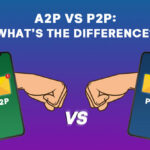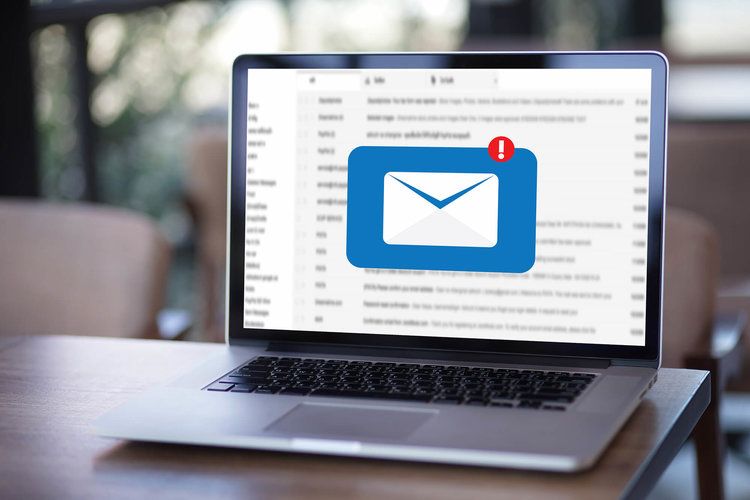
Are you concerned that your emails may not reach your customers’ inboxes? That your business line will suffer as a result of how spam filters assess your messages? Perhaps you’ve already noticed that your emails are being sent to spam rather than your inbox and are looking for assistance.
Don’t worry if you nodded at any of these. We’ve got you covered! This article will not only answer the main question – why do emails go to spam? – but will also suggest strategies to assist you boost your inbox placement rate.
So, without further ado, here are the 12 reasons why some emails end up in spam and what you can do to avoid this in the future.
12 reasons why emails go to spam and what you can do about it
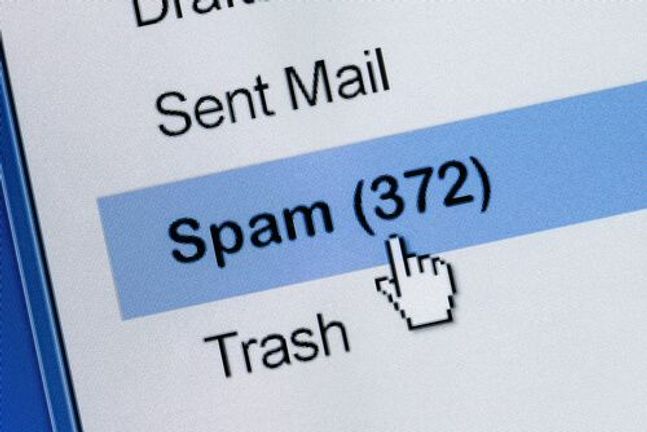
1. You don’t have the permission to contact your recipients
Although email marketing has always been permission-based, regulations and the definition of “consent” vary by country.
Because of these distinctions, you’d often hear about marketers who downloaded an email list from the Internet or purchased it from another company, then thought it was fine to send them marketing emails as long as they had the option to unsubscribe. That, however, is no longer sufficient.
Before you begin sending email campaigns, always ensure that you have permission to do so. If you fail to do so, you risk not only having your emails routed to spam, but you may also face a fine.
That’s why if:
- you’re still filling your email campaigns with contacts from Outlook, Gmail, LinkedIn, or any other place where you’ve interacted with people,
- you’re an ecommerce business automatically adding people to your list from the checkout page,
- you’re using a pre-checked newsletter consent checkbox in your web form,
- buying or downloading email lists from the ‘reputable sites’…
…you should stop right now.
If you’re unsure whether it’s appropriate to contact some of the people in your database, consider running a reconfirmation campaign. By sending an email in which you explicitly ask your audience if they want to remain on your list, you can ensure that only those who are still interested in your offer will remain on the list.
Not sure what these looks like? Here’s one example we’ve received when GDPR came into force:
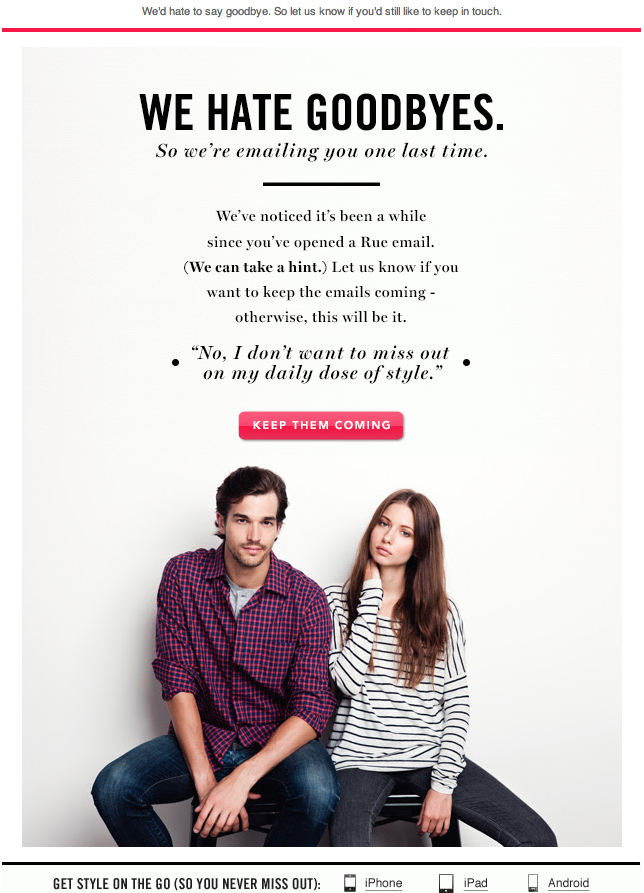
Reconfirmation email sent right before GDPR came into force by Rue La La
Pro tip 1: Manage a consent field in your email campaigns. These will allow you to easily store, manage, and view all of the permissions that your contacts have given you.
Pro tip 2: To improve your inbox placement rate and avoid having your emails reported as spam, always exclude (or suppress) contacts who haven’t given you the proper consent. This is especially important if you have contacts in your database who have not agreed to receive marketing emails.
Pro tip 3: If you’re sending the same message to multiple marketing lists, see if your email service provider skips duplicate email addresses automatically. Because not all platforms support it out of the box, use caution if you don’t want to send the same message to your target audience multiple times.
2. It’s not clear what your subscribers are signing up for
Transparency is key, especially when it comes to building your customer base. Users should be fully aware of the type of communication they will receive in the future when filling out your sign-up form.
Make it very clear what you intend to discuss in your emails and then deliver on that promise. When you do this, you will notice that your unsubscribe, and complaint rates will drop. And your sender reputation will improve.
Pro tip 1: Make sure your web form, thank you page, and welcome email all clearly state what your users are signing up for. Doing this early in the subscription process increases your chances of developing strong relationships with your target audience. In addition, your emails will be less likely to be marked as spam.
Take a look at this example from a brand called Nerd Fitness. Throughout their sign-up form, thank you page, confirmation email, and subscription confirmation page they’ve made it clear what their newsletter is about, how frequent their communication is, and how the subscriber can make sure to receive the communication in their inbox. Here’s an example from Nerd Fitness:
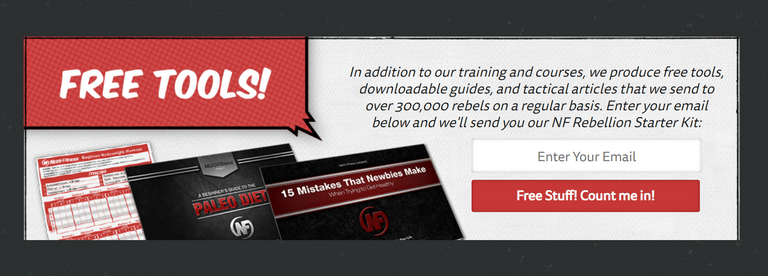
Step 1. Sign-up form from Nerd Fitness explaining what we will receive once we subscribe to their newsletter
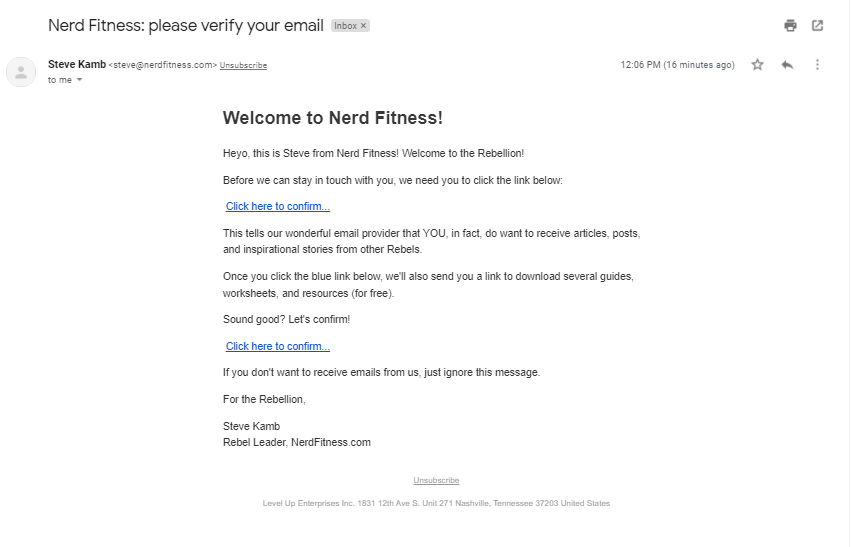
Step 2. Confirmation page telling you that you need to click the confirmation link
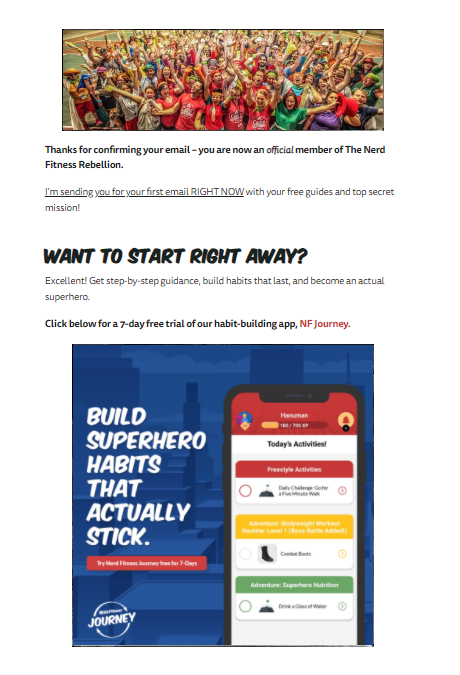
Step 3. Subscription confirmation email
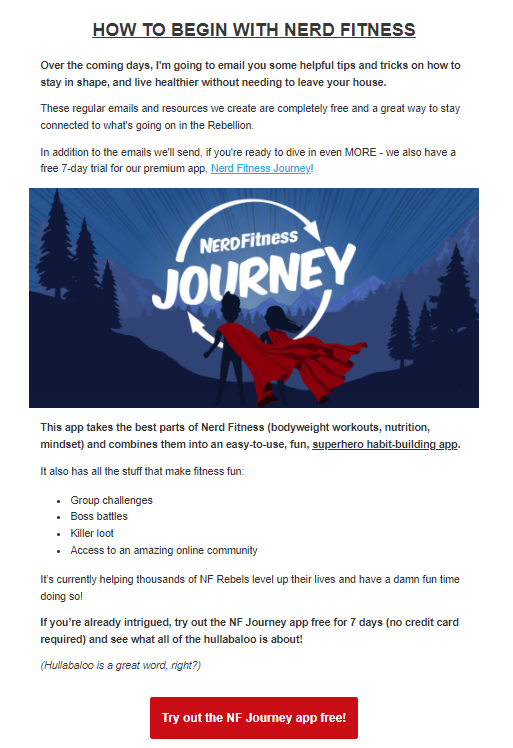
Step 4. Newsletter subscription confirmation page welcoming new subscribers
Pro tip 2: If you want to lower your unsubscribe rate a good idea might be to fill out your email list description visible in your subscriber’s preference center. This will help your audience decide which lists they want to stay subscribed to and which ones they want to opt out from.
3. You’re making it difficult to unsubscribe
This is a major red flag and one of the most common reasons subscribers report emails as spam.
If someone wishes to discontinue receiving marketing communications from a specific sender, the last thing they want to do is waste time looking for a way to unsubscribe. When they find it difficult or lose faith in the message’s ability to be processed successfully, they report it as spam or manually move it to their spam box. The marketer is at a loss in both cases.
Here are some things you should avoid:
- burying down the unsubscribe link below the main part of your footer (e.g., by adding empty lines on top of it),
- hiding the unsubscribe link (e.g., by changing the copy or writing in a hard-to-read color),
- making your recipients contact you to resign from the newsletter,
- making recipients log into some form of a panel to unsubscribe or change their mailing preferences,
- taking unreasonably long to process your users’ requests to unsubscribe.
Adding any of the above roadblocks just pushes your emails closer to being marked as spam and being negatively evaluated by Internet Service Providers’ (ISPs’) spam filters.
Pro tip 1: If you’re concerned about an excessively high unsubscribe rate, consider giving your subscribers the option to opt out, reduce the frequency of your mailings, or even pause them for a set period of time (e.g., 90 days).
You can divide your recipients into different groups by using a separate email list or segment or include a brief explanation of why the subscriber is receiving your emails and a reminder of when and how they signed up for your newsletter.
Pro tip 2: If you’re receiving a lot of spam complaints despite following the tips in points 1-3, you could try including an additional unsubscribe link right after the preheader text inside your email message.
This may appear to be a radical move, but having more people unsubscribe from your list is preferable to having them report your messages as spam.
Improve your email deliverability and start sending email campaigns that make the cash register ring with elfoMAP!!
4. You’re not using the right email marketing software
I know it sounds like we’re blowing our own horn, but it’s impossible to overlook an important factor–your email marketing software. Your email service provider also plays an important part in delivering your emails to your subscribers’ inboxes.
Let’s take our example.
Here, at elfoMAP manages your IP reputation, handles bounces, unsubscribes, spam complaints, and creates feedback loops.
Thanks to this, we know when an email address is no longer active, is misspelled, or when the recipient wants to unsubscribe. When we come across such addresses, we remove them from your list so that your deliverability isn’t affected and you don’t have to pay extra for contacts that aren’t useful to your company.
In addition, we check your email lists for common issues as they are imported, automatically assign engagement scores to your contacts to make reengagement campaigns easier, and assist with custom DKIM configuration if you use your own domain.
Pro tip 1: Email authentication is another option worth investigating. Setting up SPF, DKIM, and DMARC will identify you as a recognizable sender to the ISP. By identifying you, they can ensure that you are not impersonating anyone else. It will also assist you in increasing your domain and IP reputation, as well as making all of the good things you do “stick” to your brand.
Pro tip 2: While designing and coding your own emails from scratch works for many out there, one of the common reasons why emails go to spam is that their HTML code isn’t clean.
To avoid that, either hire a developer who’s on top of the email design game specifically (coding for email is very different from coding websites) or use an email maker.
5. You’re sending your email campaigns from a freemail domain (e.g. Gmail or Yahoo!)
Marketers who are just starting out with email marketing often use freemail domains like Gmail or Outlook to send out their newsletters. While it is not illegal, we do not recommend it.
Bulk emails from freemail domains such as Yahoo!, AOL, Gmail, or Mail.ru are often rejected by mailbox providers. ISPs would prefer to receive messages from domains registered by an individual sender, whom they can track back and whose reputation they can evaluate. Tracking down the individual sender is obviously impossible with freemail domains, which may explain why they are frequently abused by scammers and people who want to send out spam on purpose.
So, what should you do instead? All you need to do is create your own company domain or a subdomain under your existing domain to use for email campaigns.
Even if you only use it in the from address and not the mailing domain from which you’re sending your messages, it will help you deliver your message more effectively.
Pro tip: Using tools like the elfoMAP will help you identify such common mistakes as the freemail domain in your from address. By running your newsletters through a spam checker, your chances of reaching the inbox grow considerably higher.
6. Your email frequency is off
As a general rule, you should avoid blasting emails to your entire customer base and instead take a more structured approach. However, we’ll get to that later in this article.
Pro tip 1: Determine the appropriate email frequency by compiling your key email marketing metrics (such as total number of conversions, unsubscribe rates, and bounce rates). Once you’ve determined the best email schedule for your audience, make sure to communicate it to them, for example, in your subscription form or the welcome email.
Pro tip 2: To increase your email frequency without alerting spam filters, begin by contacting your most engaged subscribers first. Suppression lists can be used to exclude segments that are less likely to respond to your email campaigns.
After you’ve successfully engaged your best recipients, you can gradually begin to include those who read your newsletters less eagerly.
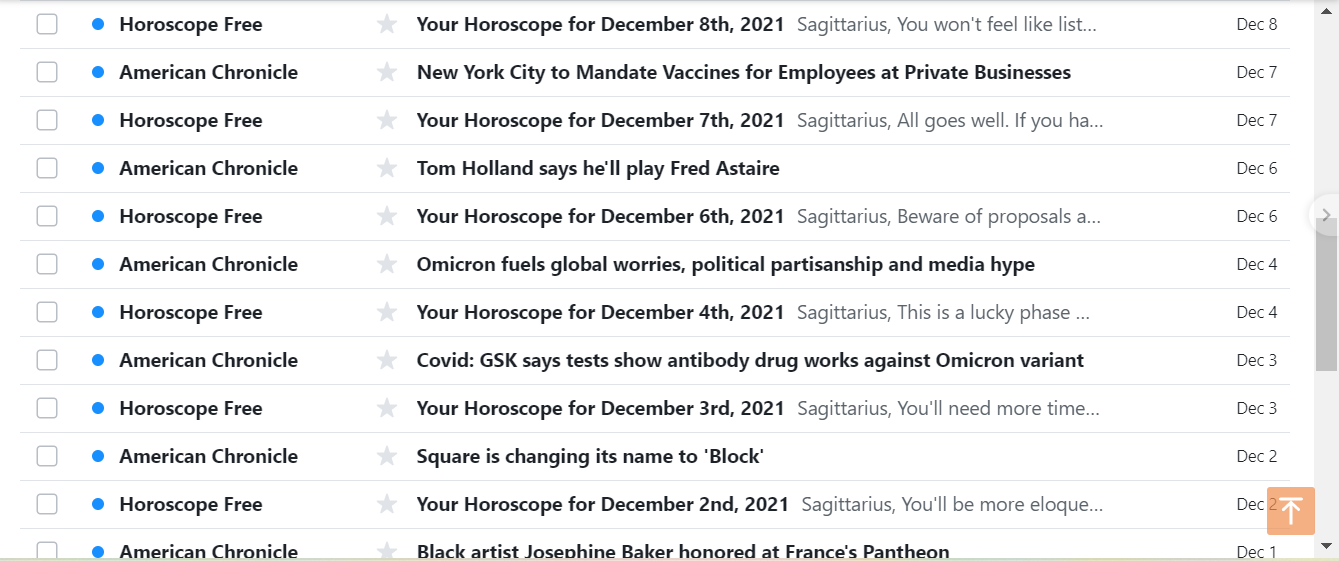 Some email marketers may get away with sending out a lot of emails. Even the name of the newsletter suggests that it is a daily newsletter update in this case. This method, however, should be used with caution because it has the potential to backfire. Users can become overwhelmed if they receive too much communication. This will result in an opaque churn. In other words, they will not unsubscribe from your communication, but by ignoring it, they will negatively impact your total email deliverability.
Some email marketers may get away with sending out a lot of emails. Even the name of the newsletter suggests that it is a daily newsletter update in this case. This method, however, should be used with caution because it has the potential to backfire. Users can become overwhelmed if they receive too much communication. This will result in an opaque churn. In other words, they will not unsubscribe from your communication, but by ignoring it, they will negatively impact your total email deliverability.
7. You’re not paying enough attention to email list hygiene
Email list hygiene management entails identifying engaged subscribers, re-engaging those who have become unresponsive, and getting rid of those who hold no business value.
And whom do we mean, when we’re saying that they’re holding no business value? Not just those who no longer engage with your communication, unsubscribe, or mark your emails as spam. We also refer to those who have provided incorrect or fictitious email addresses, as well as those who have abandoned their mailboxes.
You might think that this isn’t such a big deal. According to a recent Return Path study, marketers lose 44% of their new subscribers within the first year of their subscription. And if a significant portion of that churn goes unnoticed because people don’t actually click the ‘unsubscribe button,’ we’re looking at a possible reason why your emails end up in spam.

So, what should you do? To keep your list clean and hygienic, ensure that your entire list building process is flawless. That your data is properly collected and transferred to your email marketing software, and that you ideally use confirmed opt-in (a.k.a. double opt-in).
Consider this: the more effort you put into this process ahead of time, the fewer problems you’ll have in the future regarding bad data, human errors, and low inbox placement.
Pro tip 1: If you haven’t cleaned your list in a while, or if you haven’t processed bounces and unsubscribes, you should start now. The best way to accomplish this is to use an email verification tool and set up an automated re-engagement campaign that will send a couple of emails to those identified as inactive by the system.
You can easily do this entirely in elfoMAP. elfoMAP includes marketing automation templates that you can use to run such a campaign.
8. Your emails are image-heavy (but not text-heavy!)
Email marketing differs slightly from other marketing channels. Although images are important, they should not be the focus of your newsletters.
Many email marketers make this mistake: they overcrowd their email templates with images in order to make them look nicer and spend less time writing sales copy. This may seem like a good strategy–after all, people like images and can read the text even when it’s part of an image.
But there are two problems with this approach.
One is that, unless you provide the ALT text to your image, consumers that use screen readers may have trouble reading your content. Plus, with so many email clients blocking images automatically messages that don’t have the ALT text provided look rather unappealing.
The second is that ISPs such as Gmail and Outlook view this differently. Many heavy images result in heavy emails, and ISPs want to process as many emails as possible. By making your newsletters image-heavy, you make the process more difficult and resource-intensive. As a result, they may choose to filter your messages less favorably, sending them to the spam folder or even bouncing them.
In general, the more text there is or the higher its ratio to images, the better.
So, what should you do when images are required in your email template?
First and foremost, determine whether your email service automatically reduces the size of images you upload to your newsletter.
When you add your own images to an email template in elfoMAP, for example, you must first load the image editor and save the images to have them cropped and compressed. This is not the case for GIFs, which must be edited outside of the platform using tools such as Ezgif.
Pro tip: Adding more copy to your footer is one way to boost your text-to-image ratio. You could explain why your subscribers are receiving the email, who is sending it, and how they can manage their mailing preferences or unsubscribe from it there.
You can also boost your text-to-image ratio by including copy (in text, not over an image) in your email introduction and product descriptions. The same is true for creating call to action (CTA) buttons, which can be coded and styled to look almost identical to what your designer would create.
9. You are directing traffic to dubious websites (among other things)
Many email marketers are unaware that when ISPs and spam filters analyze your email’s content, they also look at your links.
Here are a few things to avoid if you’re trying to improve your email deliverability because it’s being flagged as spam:
- linking to websites with a poor domain reputation
- use links that repeatedly redirect users
- use dubious link shorteners
- with a low text-to-link ratio
- linking to an excessive number of different domains
Keep in mind that your links may be hidden in the images you use. If they’re hosted on a website with a bad domain reputation, email spam filters may pick them up. Overall, you should double-check the websites you’re linking to and the number of links in your email. Again, a higher text-to-link ratio is preferable.
Pro tip 1: Before hitting the send button, run your emails through a spam checker. This way, you’ll be able to pinpoint the problematic section or individual element. It could be a single link or a section of your copy, so pay attention to all elements in your email template.
Pro tip 2: If you want to lower your spam score even further, you can include the plain text version of your message in your email template. Why bother including it?
Because it is one of the factors used by ISPs to determine the legitimacy of your email campaigns. It is also useful for those who prefer to read emails in their non-HTML format.
10. You’re playing dirty
Some marketers will do anything to increase their email open rates and get a chance of receiving a click on their link. What they often don’t realize, however, is their tactics leave their customers at loss. And even if there’s any short-term gain for their business, it often has a long-term impact on their whole email marketing program.
What sort of tactics are we talking about? For example, adding phrases like “Re:” or “Fwd:” to their subject lines. Adding these elements is meant to trick the subscribers into thinking that your marketing email is just a regular massage they’d receive from a friend or colleague.
Naturally, newsletters and other marketing communication don’t work this way. Although they do include personalization or a friendly from name, they’re not meant to trick people into thinking that they’re sent from an individual person in response to their previous email.
How about using the so-called spam trigger words? You know, words like “buy now” or “free”. Believe it or not, most lists of “words to avoid” are now obsolete. Spam filters have evolved so much, they don’t just look at the direct use of common phrases like the ones above. Using phrases like “cheap” won’t move your emails into the spam folder.
Pro tip: Now that spam filters have become more complex, your main focus should be on increasing your email subscribers’ engagement. One of the best ways to do this is to use email automation. Automated emails are sent in response to your recipients’ actions and preferences, which is why they generate above-average open and click-through rates. There are of course other ways to increase your engagement, but we’ll go over that in a moment.
11. Your email engagement rates are low
If you’re seeing that your average email marketing metrics are below the email industry benchmarks, there are a few things you should do.
First of all, focus on improving your email list hygiene. As we’ve discussed in point #7, it’s critical to keep your list clean from bad or inactive email addresses. That’s why you should regularly run re-engagement campaigns that’ll reactivate and separate inactive recipients from your most loyal readers.
The second thing you should consider is lead nurturing. Instead of throwing your new subscribers into the same stream of communication everyone else receives, you should treat them in a more special way. By designing a drip campaign, you can turn your new contacts from complete strangers to active consumers one message at a time.
Welcome emails will play a significant role in your lead nurturing campaigns. They are excellent not only for making a good first impression, but also for engagement and deliverability. It’s also easy to set up welcome emails. All you have to do is set up an autoresponder or a marketing automation workflow that will be sent immediately after a new contact is added to your list.
Last but not least, make sure to segment your audience for all major campaigns. Rather than blasting emails to everyone on your list, target the customer segments most likely to be interested in your offer.
You could base this on the customer attributes they provided when signing up for your list, or you could look at their previous behavior and identify only those who are engaged in your communication. By going for the more targeted approach, you’re likely going to see higher engagement rates and won’t need to worry about missing the inbox any longer.
Pro tip: Increasing your email engagement rates takes time. If your messages mostly land in the spam folders, start sending your email campaigns to only your most engaged audience. Once you’ve managed to reach them, slowly begin to go for the slightly less engaged ones and ideally skip those who are completely unengaged.
As mentioned before, in elfoMAP we evaluate your subscribers’ activity and assign them different engagement scores automatically.
12. Your mailing IP has a bad history record
If you’ve gone through all of the aforementioned reasons, fixed them, and your emails are still ending up in the spam folder, your mailing IP is most likely to blame.
The IP address through which you send your email campaigns develops its own reputation. And this reputation sticks with that IP address for months, even if no one is using it to send email campaigns.
Most email marketing providers (including elfoMAP) use a number of shared IPs to process your campaigns, so this isn’t usually a problem. In other words, a number of marketers work together to build a brand’s reputation. Furthermore, email traffic is routed through various channels to ensure that deliverability is maintained.
Having said that, if you’re having deliverability issues and are using your own mailing IP, you should look into this further.
Note: It’s also possible that your IPs’ reputation gets affected by someone else who’s sending their campaigns from an address within the same IP class. This is rarely the case, but if all else fails, you should look into the reputation of addresses in your IP class.
Pro tip: If you’re thinking about using a dedicated IP address to send out your campaigns, find an email service provider that offers full support.
Get out of the spam folder right now.
It’s time to start improving your email deliverability now that you’ve learned the 12 reasons why your email campaigns may be going to spam rather than the inbox and how to be seen as one of the great email senders.
If you’re ready to migrate your campaigns to an email marketing tool , sign up for elfoMAP!
